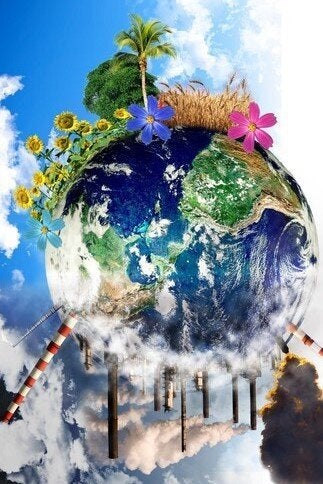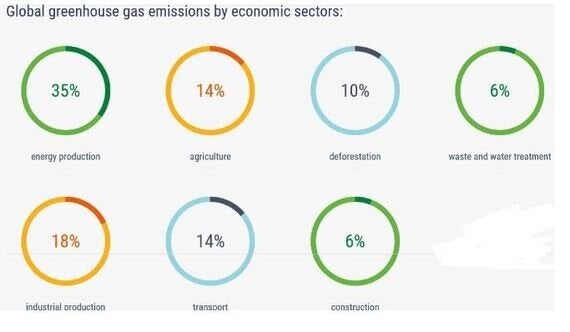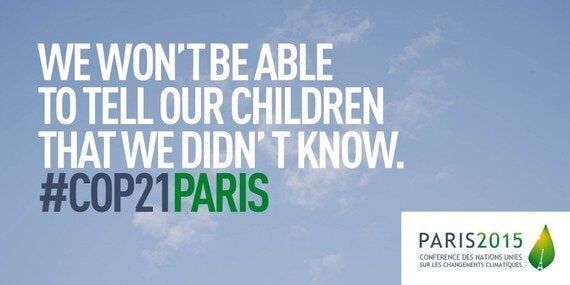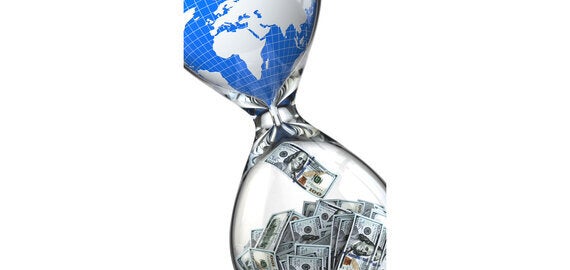As the media spotlight focuses on the world climate change summit (COP21) in Paris over the next two weeks (30 Nov - 11 Dec), are you wondering what the outcome will be? Can the fallout of dangerous climate change be averted at this late stage? Will the resulting actions be enough?

Photo by permission of Shutterstock under standard license agreement
So what is climate change and how can we tackle it?
Man-made Green House Gas (GHG) emissions have increased since pre-industrial times, driven largely by economic and population growth. This has led to atmospheric concentrations of GHG gases such as carbon dioxide (CO2), methane and nitrous oxide, which are causing global temperature rise. Since 1990, GHG emissions have risen from 34 billion tonnes/year of CO2 to 46 billion tonnes/year today.

Photo courtesy of COP21 Paris
Climate scientists predict global temperatures could rise by 4-5 °C. This will disrupt the climate, agriculture, melt polar ice caps and cause sea levels to rise. Evidence from the Intergovernmental Panel on Climate Change (IPCC) shows that since the 1950s, many observed changes are unprecedented in at least the last 800,000 years. Already the atmosphere and ocean have warmed, the amounts of snow and ice have diminished, and sea level has risen. By 2100 average sea and ocean levels could rise from 26cm to 82cm threatening islands, coastal areas and cities.
Scientists predict that keeping the global temperature increase below 2°C is likely to protect us against the worst climate change impacts. For this we need to limit atmospheric GHG concentrations to 450 ppm CO2e by 2100. To reach this target, GHG emissions need to be reduced by 40-70% by 2050 and drop to levels close to zero by 2100. Some years ago we passed the point where we can stop climate change. The focus now is on a balance of mitigation and adaptation for a 2°C world. This brings many challenges for humans and the other species who share our planet. In the words of HRH Prince of Wales in his opening keynote address at COP21 "In damaging the climate we become the architects of our own destruction".
What will COP21 do?
The summit is the 21st "Conference of the Parties" (COP21) - the annual meeting of all countries which want to take action for the climate.
COP21 aims to reach a new legally binding universal climate agreement capable of keeping global temperature rise below 2°C compared to pre-industrial levels and adapt our societies to existing disruption. This is to be implemented in 2020. The agreement is to apply to all the delegates of the 195 States that are Parties to the United Nations Framework Convention on Climate Change (UNFCCC).

Photo courtesy of COP21 Paris
The core elements of the agreement include:
1.GHG emission reduction targets: Ahead of COP21, the 195 States were invited to submit their Intended Nationally Determined Contributions (INDCs) and national climate action plans for reducing GHG emissions.
2.Finance: Industrialised nations agreed to raise $100 billion per year by 2020 to assist developing countries in climate-change adaptation and mitigation and finance the transition towards low-carbon, resilient economies. Dedicated institutions were established to progress activities such as the Green Climate Fund. In 2014, $62 billion was raised.
Beyond the government negotiations, commitments from civil society including business, Non-Governmental Organisations (NGOs) and local government aim to accelerate support. To date, 10,773 climate action commitments have been made by civil society including companies, cities and investors to address climate change.
What is our progress on the 2°C target?
Ahead of COP21, over 180 countries covering almost 95 percent of global GHG emissions delivered their national climate action plans to the UNFCCC. Taking these into account, by 2030 we would be heading for a rise of around 3°C by the end of the century. So GHG reductions and funds are not yet enough and the process needs to be speeded up to meet the target of 2°C by 2100. The Paris agreement intends to establish a five yearly periodic review mechanism to raise the ambition and progressively improve. However, there are still many questions on how national targets will be implemented and the legally binding nature of the agreement to be worked out.
So what is different with this meeting compared to all those before? Time is running out to keep global warming below 2°C. The awareness of this and its implications is high and reflected in the rhetoric across governments, corporations, investors, religious leaders and NGOs. Unusually, over 150 heads of state and government including President Obama and President Xi Jinping of China attended day one of COP21 in Paris to give their public support. But actions speak louder than words and the actions to date are still not enough.
We have the knowledge, technology and finance within our reach to keep global warming below 2°C. However, we still lack the political will to meet the target needed and a clear global framework to co-ordinate efforts to scale and meet the challenge. An international, legally binding agreement that drives ever higher ambition and encourages all countries to cooperate in their own national interests to make a more rapid transition to the low-carbon future that will keep the world below 2°C is an essential part of the climate change solution. This is needed to send strong signals that GHG emissions will be phased out and mechanisms to scale up efforts will be done equitably and continuously. COP21 needs to provide this framework.
What else do we need?
A crucial element beyond the COP21 agreement is a "Carbon price" that effectively constrains GHG emissions and sends strong market signals to drive the transition to a low Carbon economy. Money talks, so this is essential for stimulating clean technology and market innovation to fuel new, low Carbon drivers of economic growth.

Photo courtesy of Shutterstock under standard license agreement
The lack of global Carbon market and price that reflects the damage climate change causes to society is seen as a major gap in tackling climate change. The current carbon market is made up of a patchwork of initiatives in a few countries. Even the largest of these, the European Union Emissions Trading Scheme - a mandatory cap and trade scheme for Carbon - has struggled with low prices. The true costs of GHG emissions and climate change are the costs that society pays for in other ways. For example, health care costs from heat waves and droughts, damage to crops or to property from flooding and sea level rise. A carbon price needs to accurately account for these costs. Subsidies for fossil fuels also need to be removed. With these measures market transformation to a low Carbon economy can be driven more easily by the market. A growing volume of leaders from government and business have been speaking out in favor of carbon pricing policies that can maintain competitiveness, create jobs, encourage innovation, and deliver meaningful GHG emissions reductions.
Financial investment in the low carbon economy is also starting to flow such as Bill Gate's multibillion dollar clean energy fund. But financial support also needs to speed up and scale into clean energy, greening infrastructure, sustaining ecosystems like forests and coral reefs and enabling communities to adapt. All these elements are essential to staying below 2°C.